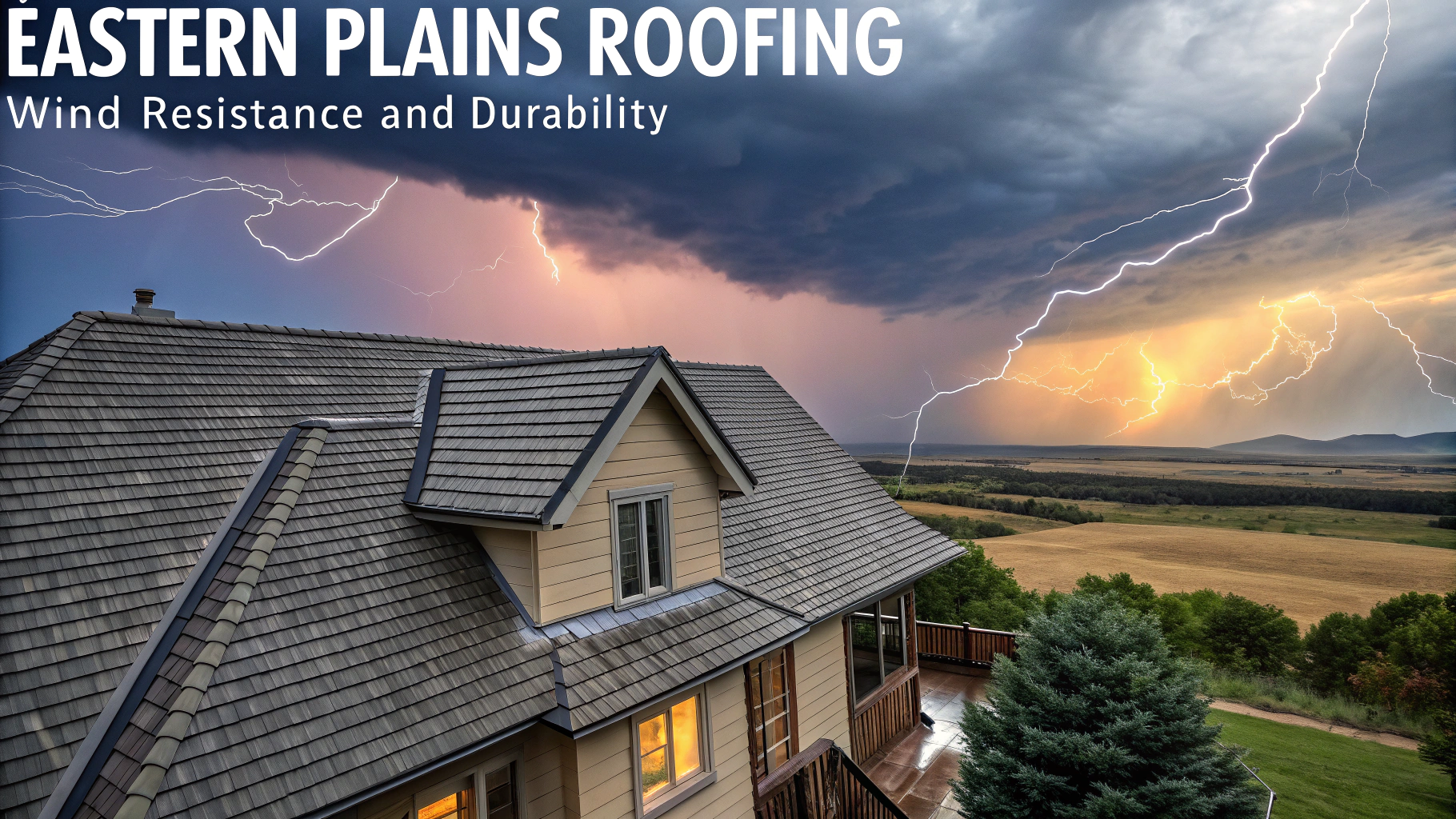Colorado’s Eastern Plains present unique challenges for roofing systems, with frequent high winds and severe weather patterns testing even the most robust materials.
Understanding wind resistance ratings and durability factors becomes essential for homeowners and builders in this region, where gusts can exceed 80 mph during storm seasons.
This guide examines proven roofing solutions specifically designed to withstand the harsh conditions of Colorado’s Eastern Plains while maintaining long-term structural integrity.
Wind Resistance Ratings Explained
Wind resistance in roofing materials is measured by ASTM D7158 standards, with ratings from Class G (up to 120 mph) to Class H (up to 150 mph).
- Class D: Effective up to 90 mph
- Class G: Effective up to 120 mph
- Class H: Effective up to 150 mph
Best Roofing Materials for Eastern Plains
Impact-resistant asphalt shingles with a Class 4 rating offer superior protection against hail and wind damage.
- Metal roofing with interlocking panels
- Class 4 impact-resistant architectural shingles
- Concrete tiles with wind clips
- TPO membrane systems for flat roofs
Installation Techniques for Maximum Wind Resistance
Proper installation significantly improves wind resistance capabilities.
- Use 6 nails per shingle instead of 4
- Install starter strips at eaves and rakes
- Apply enhanced underlayment systems
- Secure all flashings with additional fasteners
Maintenance Tips for Eastern Plains Roofs
Regular maintenance helps maintain wind resistance properties over time.
- Inspect roof after every major storm
- Check and reseal flashing points annually
- Remove debris from valleys and gutters
- Document any changes in shingle condition
Insurance Considerations
Many insurance companies offer premium discounts for wind-resistant roofing systems.
| Rating Class | Potential Discount |
|---|---|
| Class 4 Impact | Up to 28% |
| Class H Wind | Up to 15% |
Taking Action: Next Steps
Contact a certified roofing contractor for a professional wind resistance assessment of your current roof system.
For expert consultation on wind-resistant roofing solutions in Eastern Colorado, contact local certified contractors through the Colorado Roofing Association at (303) 484-0549.
Schedule inspections during spring or fall for optimal assessment conditions and to prepare for severe weather seasons.
Cost Analysis
Wind-resistant roofing systems typically require higher initial investment but offer long-term savings.
| Material Type | Average Cost/Square | Lifespan (Years) |
|---|---|---|
| Standard Shingles | $80-120 | 15-20 |
| Impact-Resistant Shingles | $150-200 | 25-30 |
| Metal Roofing | $200-350 | 40-50 |
Common Wind Damage Warning Signs
- Lifted or curling shingles
- Missing granules on asphalt shingles
- Loose or damaged flashing
- Visible gaps in roofing materials
Professional Certification Requirements
Eastern Plains contractors should hold specific certifications for wind-resistant installations.
- NRCA Wind Installer Certification
- Manufacturer-specific training credentials
- State-specific licensing
- Insurance and bonding requirements
Securing Your Investment in Eastern Plains
Investing in wind-resistant roofing systems isn’t just about protection—it’s about peace of mind in Colorado’s challenging climate. Regular inspections, proper maintenance, and working with certified professionals ensure maximum durability and value retention.
Document all improvements and maintain detailed maintenance records to support insurance claims and property value. Consider scheduling bi-annual professional assessments to stay ahead of potential issues and maintain optimal wind resistance.
Remember that the best defense against Eastern Plains weather is a proactive approach to roofing system selection and maintenance.
FAQs
- What wind speeds can Eastern Plains roofing systems typically withstand?
Most properly installed roofing systems in Colorado’s Eastern Plains are rated to withstand winds of 90-130 mph, depending on the materials and installation methods used. - How does the climate in Eastern Colorado affect roof durability?
The semi-arid climate with extreme temperature fluctuations, intense UV exposure, and frequent hailstorms requires roofing materials that can handle thermal expansion, UV degradation, and impact resistance. - What are the best roofing materials for wind resistance in the Eastern Plains?
Class F (130 mph) rated architectural shingles, metal roofing, and concrete tiles are among the most wind-resistant options for Eastern Plains properties. - How often should Eastern Plains roofs be inspected for wind damage?
Roofs should be inspected twice yearly and after any significant wind event exceeding 50 mph to check for lifted shingles, damaged flashing, and compromised seals. - What role does proper installation play in wind resistance?
Proper installation, including correct nail placement, adequate fasteners, and proper sealing, can increase wind resistance by up to 50% compared to poorly installed roofing. - How can I improve my existing roof’s wind resistance?
Wind resistance can be improved by adding roof straps, reinforcing edge materials, upgrading to storm clips, and ensuring all shingles are properly sealed and maintained. - What signs indicate my roof’s wind resistance is compromised?
Missing or lifted shingles, damaged flashing, granule loss, loose seals, and visible wear patterns along roof edges are common indicators of compromised wind resistance. - How long do wind-resistant roofing systems typically last in Eastern Colorado?
Quality wind-resistant roofing systems, when properly installed and maintained, typically last 20-30 years for asphalt shingles and 40-70 years for metal roofing in Eastern Colorado conditions. - Are there specific building codes for wind resistance in Eastern Colorado?
Yes, most Eastern Colorado jurisdictions require roofing systems to meet minimum wind resistance ratings of 90 mph, with some areas requiring higher ratings based on local conditions. - What warranty considerations should I know about for wind-resistant roofing?
Standard warranties typically cover winds up to 60-110 mph, while enhanced warranties may cover up to 130 mph, but proper installation and maintenance are required to maintain coverage.
